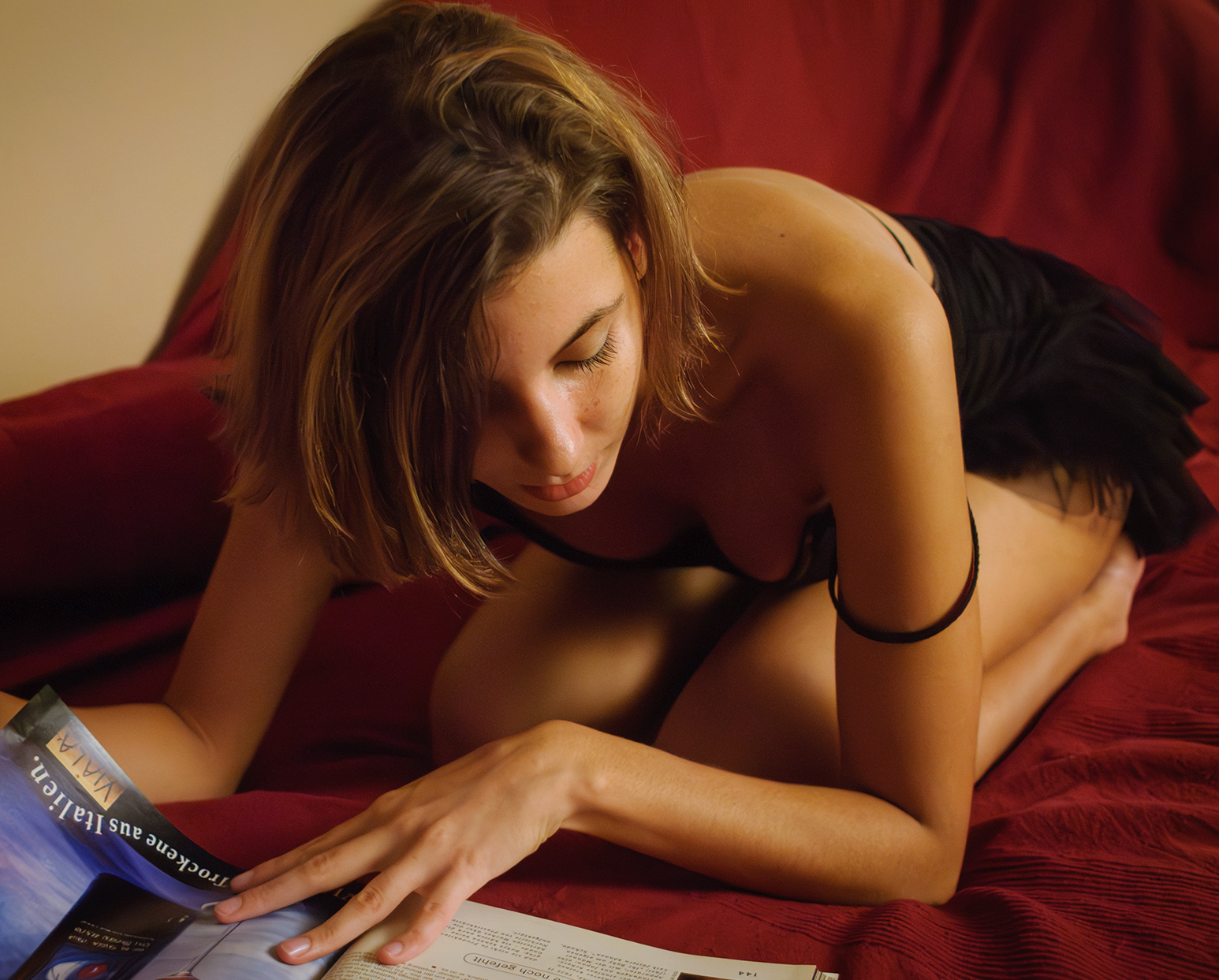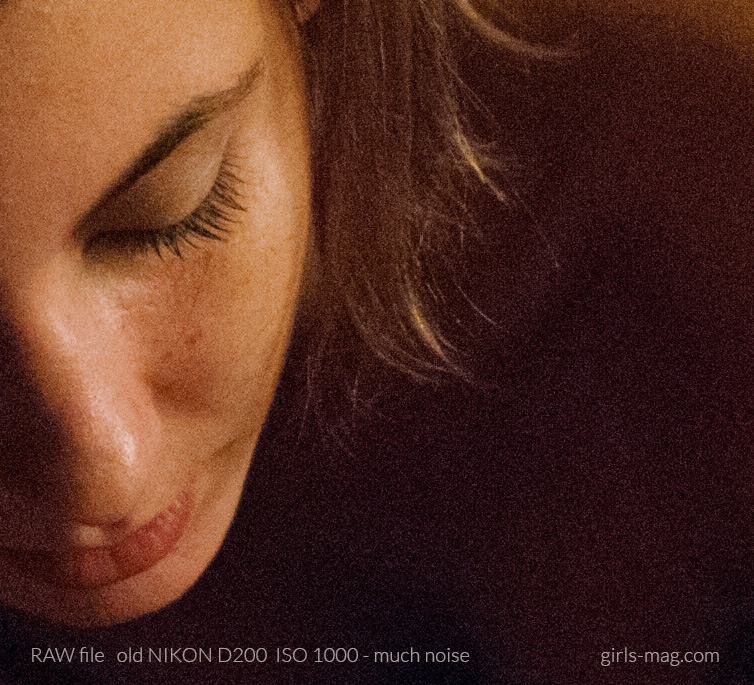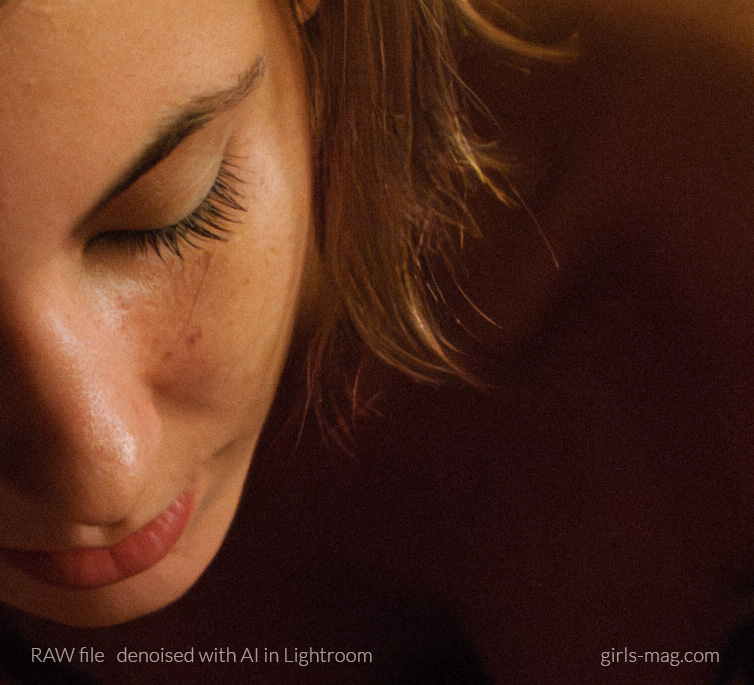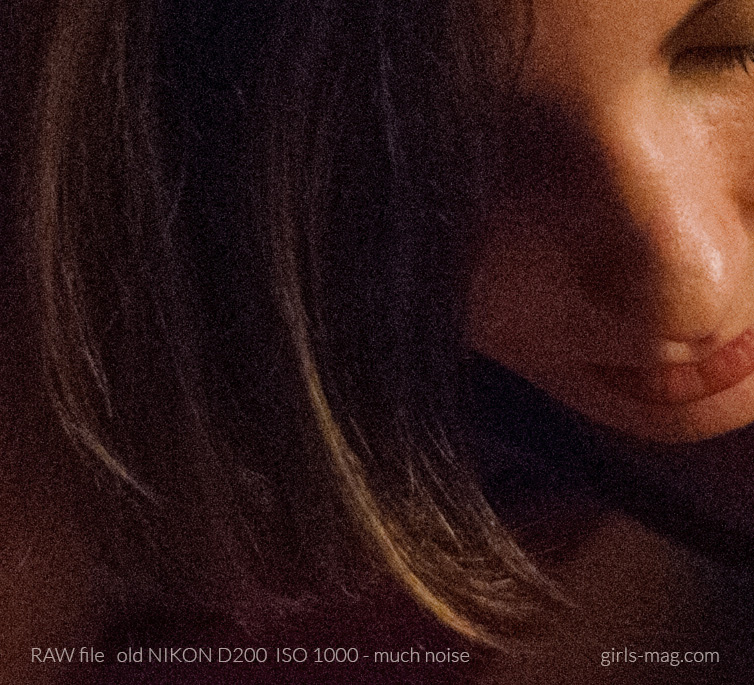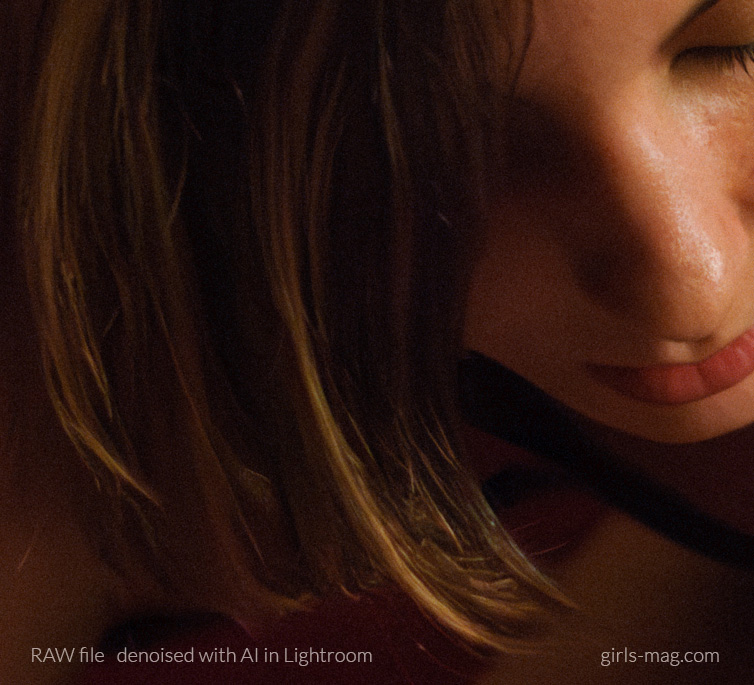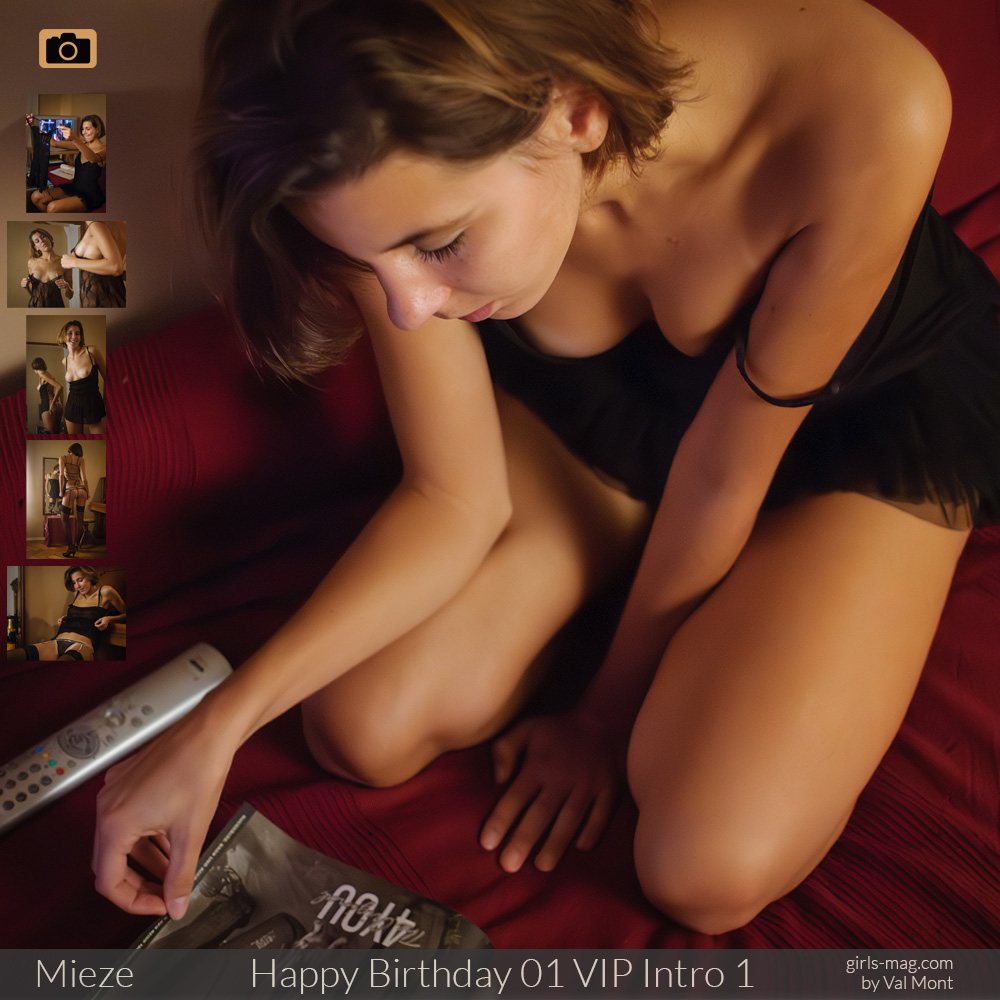Bild-Bearbeitung / Image Processing
english version below
1. ISO Rauschen
Alte RAW-Schätze retten mit der neuen KI-Entrauschung in LR
Hohe ISO Werte und entsprechendes Bildrauschen sind für mich fotografischer Alltag, denn ich arbeite draußen ausschließlich mit vorhandenem Licht (also ohne Blitz). Drinnen verwende ich wenn möglich das Fenster- oder Raumlicht.
Abendliche Szenen beleuchte ich wie ein Filmset mit Scheinwerfern und Practicals, und achte darauf, dass das Licht dezent und so natürlich wie möglich wirkt. Daher komme ich um die hohen ISO-Werte nicht herum, vor allem deshalb, weil ich gerne mit Blende 4 oder 5,6 arbeite, damit mir der Hintergrund nicht in einem undefinierbaren Pixelbrei¹ verschwimmt.
Mit den heutigen Kamerasensoren sind hohe ISO Werte nicht mehr so das Problem, aber zu den Girls-Mag-Anfängen ab 2007 schon. Selbst 500 ISO brachten schon sichtbares Rauschen. Und da ich generell etwas unterbelichte, um für die Nachbearbeitung in den Lichtern Reserven zu haben, war Bildrauschen ein ständiges nerviges Thema.
Ein weiterer Punkt war, dass es zwar schon damals gute Rauschfilter gab, die aber den Prozessor derart stark belasteten, dass wenn man wie ich statt Einzelbildern ganze Bilderserien entrauschen wollte, ohne den Rechner über Stunden lahmzulegen, man aufgrund der Dateigrößen notgedrungen statt der RAW-Originale die kompakteren JPGs aus der Kamera nahm. Das schlug sich natürlich in der Bildqualität nieder, die zwar immer noch gut war, aber eben nicht die Brillianz von RAW-Bildern hatte.
Das ist heute kein Thema mehr: die Rechner sind enorm schnell geworden, so dass ich jetzt mit den KI Filtern endlich auf meine alten RAW-Schätze zurückgreifen kann, die ich damals gottseidank in weiser Voraussicht mitgespeichert hatte. Die Ergebnisse sind wirklich beeindruckend.
Hier ein aktuelles KI-entrauschtes Beispiel aus meinem „Birthday“-Shooting mit Mieze 2007, damals der Start von Girls-Mag. Kamera Nikon D200, Blende 5.6, ISO 1000, Nikon Raw-Format „NEF“.
Wenn man sich im Folgenden die beiden eingezoomten Details anschaut, wird erst richtig deutlich, was für einen tollen Job die KI beim Entrauschen macht. Es gibt in den Details keinen Verlust mehr, trotz nahezu vollständiger Entrauschung. Die KI ist also in der Lage, das Bildrauschen als solches zu erkennen und aus dem Bild herauszurechnen, ohne andere Bereiche anzugreifen.
In den Schattenbereichen sieht man auch nach der Behandlung noch ein wenig Restrauschen, jedoch sehr dezent. Ich finde es wirkt fast wie Filmkorn, und gefällt mir sogar besser, als wäre dort das Bild total clean.
Besonders in den Haaren wird die Power des KI-Rauschfilters deutlich. Dieses neue Modul in Lightroom ist für mich definitiv ein Gamechanger. Ich kann euch jetzt endlich diese alten Schätze in der Brillianz und Detailreiche präsentieren, die sie verdient haben. Daher liegt natürlich auch recht viel neue Arbeit vor mir, aber ich freue mich drauf. Hier schonmal das erste neue Set mit Mieze aus dem Birthday-Shooting. Jedes Bild einzeln bearbeitet und optimiert.
Image processing
1. ISO Noise
Rescue old raw treasures with the new AI denoising in LR
High ISO values and corresponding image noise are part of everyday photography for me, as I only work outdoors with available light (i.e. without flash). Indoors, I use window or room light whenever possible.
I light evening scenes like a film set with spotlights and practicals, and make sure that the light is subtle and as natural as possible. That’s why I can’t avoid high ISO values, especially because I like to work with an aperture of 4 or 5.6 so that the background doesn’t blur into an indefinable mush of pixels¹.
With today’s camera sensors, high ISO values are no longer such a problem, but they were in the early days of Girls Mag from 2007 onwards. Even 500 ISO produced visible noise. And since I generally underexpose slightly to have reserves for post-processing in the highlights, image noise was a constant and annoying issue.
Another point was that although there were already good noise filters back then, they put such a heavy load on the processor that if, like me, you wanted to denoise entire image series instead of individual images without paralyzing the computer for hours, you had to use the more compact JPGs from the camera instead of the RAW originals due to the file sizes. Of course, this had an impact on the image quality, which was still good, but didn’t have the brilliance of RAW images.
This is no longer an issue today: the computers have become enormously fast, so that I can now finally access my old RAW treasures with the AI filters, which I thankfully had the foresight to save back then. The results are really impressive.
Here’s a current AI-denoised example from my “birthday” shoot with Mieze in 2007, when Girls-Mag was launched. Camera Nikon D200, aperture 5.6, ISO 1000, Nikon raw format “NEF”.
If you look at the two zoomed-in details below, it really becomes clear what a great job the AI does when denoising. There is no loss of detail, despite almost complete denoising. The AI is therefore able to recognize the image noise as such and remove it from the image without affecting other areas.
You can still see a little residual noise in the shadow areas after the treatment, but it is very subtle. I think it almost looks like film grain, and I like it even better than if the image were totally clean there.
The power of the AI noise filter is particularly evident in the hair. This new module in Lightroom is definitely a game changer for me. I can now finally present these old treasures to you with the brilliance and detail they deserve. So of course I have a lot of new work ahead of me, but I’m looking forward to it. Here is the first new set with Mieze from the birthday shoot. Each image individually edited and optimized.
